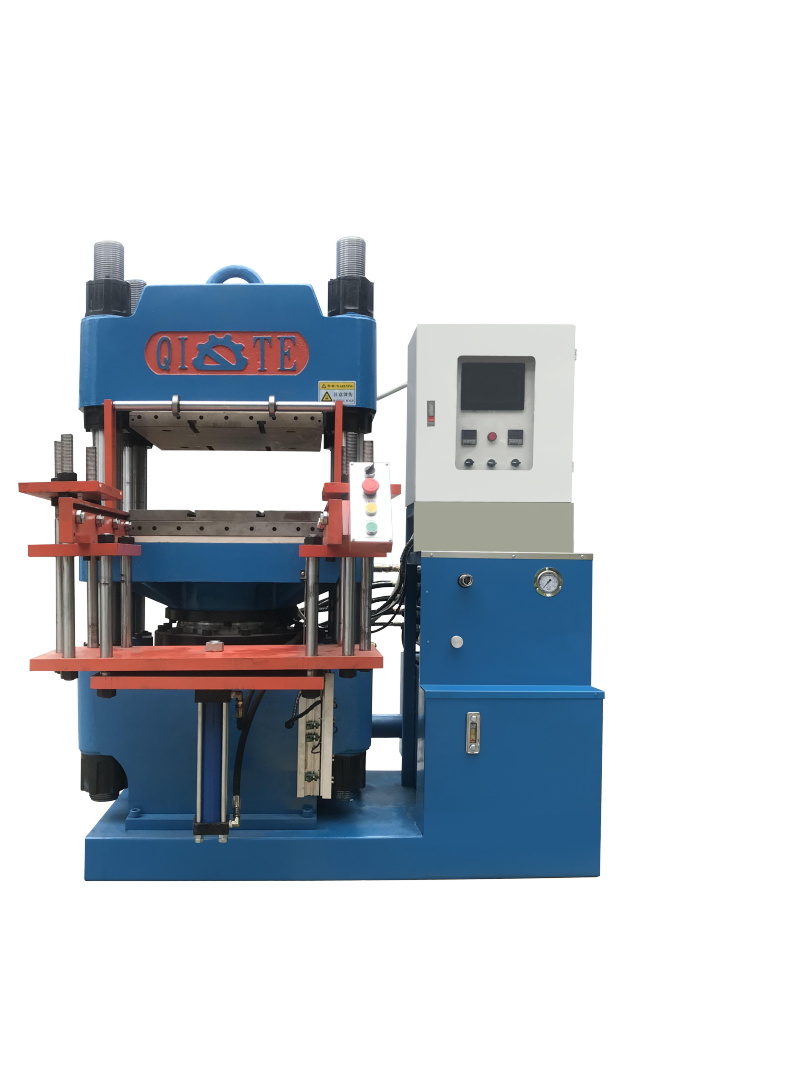
Vulcanizing Press Machine is an industrial equipment specially used for vulcanizing rubber products. Its main function is to crosslink rubber molecules through high temperature and high pressure to improve the physical properties of the material, such as wear resistance, tear resistance and elasticity. The equipment is widely used in the manufacture of rubber products, such as tires, conveyor belts, seals, etc.
Model | YX-LG200T |
Hot plate specification | 560*560mm |
Hot plate spacing | 250mm |
Cylinder diameter | 350mm |
Machine structure | Four column/single head/double head model |
System pressure | 18MPa |
Heating system | Imported electric heating tube |
Power supply specification | 380V/50HZ |

Essential details | |||
Place of Origin | China | Applicable Industries | Hotels, Machinery Repair Shops, Home Use |
Type | Showroom Location | None | |
Condition | New | Model | YX-LG200T |
Video outgoing-inspection | Provided | Hot plate specification | 560*560mm |
Machinery Test Report | Provided | Hot plate spacing | 250mm |
Warranty of core components | 1 Year | Cylinder diameter | 350mm |
Core Components | PLC | Motor power | 7.5KW |
Voltage | 380V/50HZ | Temperature range | Normal temperature -350°C |
Dimension(L*W*H) | 1.8*2.1*1.95(m) | Working level | Upper and lower layer |
Warranty | 1 Year | Machine structure | Four column/single head/double head model |
Key Selling Points | Automatic | System pressure | 18MPa |
Power (kW) | 22 kW | Power | 380V/50HZ |
Weight (KG) | 3000 KG | ||
Advantages
Efficient production: It can complete vulcanization in a short time and improve production efficiency.
Stable and reliable: It adopts advanced temperature control system and hydraulic system to ensure stable product quality.
High degree of automation: Some equipment is equipped with PLC control system to achieve fully automatic operation and reduce labor costs.
Wide range of applications: It can be applied to rubber products of different specifications and shapes, with strong adaptability.
Energy saving and environmental protection: Modern vulcanizers optimize energy consumption, reduce heat loss and improve economy.
Main features
Accurate temperature control: It adopts PID temperature control system to make the temperature distribution uniform and improve the quality of vulcanization.
Powerful pressure system: The hydraulic system provides stable pressure to ensure the density and strength of rubber products.
Modular design: The size, pressure and time parameters of the heating plate can be adjusted according to different needs.
Durable structure: The body is made of high-strength materials to ensure long-term stable operation.
Scope of application
Rubber industry: used for the production of tires, rubber tubes, rubber sheets, seals, etc.
Conveyor belt industry: suitable for the vulcanization of conveyor belt joints to improve durability.
Cable industry: used for the vulcanization of the outer rubber layer of the cable.
Other industries: such as the manufacture of rubber parts in the aviation, automotive, and construction industries.
Maintenance and maintenance
Daily inspection: Check whether the hydraulic oil, heating system, and circuit connection are normal.
Cleaning equipment: Regularly clean the residual rubber on the surface of the vulcanized plate to prevent pollution from affecting product quality.
Lubrication and maintenance: Regularly add lubricating oil to the moving parts to reduce wear.
Temperature control calibration: Regularly check the temperature sensor to ensure the accuracy of the vulcanization temperature.
Inspect the hydraulic system: Check the hydraulic cylinder, seals and other components to prevent leakage.
Through reasonable use and regular maintenance, Vulcanizing Press Machine can greatly improve production efficiency, extend the service life of equipment, and improve the quality of rubber products.